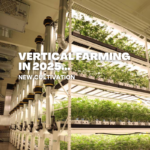The State of Cannabis in Canada: What’s New in 2025?
Since Canada legalized recreational cannabis in October 2018, the country has been at the forefront of cannabis innovation, regulation, and commerce. Fast forward to 2025, and Canada’s cannabis market has evolved significantly. With a focus on sustainability, consumer education, and global export opportunities, Canada continues to influence the trajectory of the global cannabis industry. This blog will explore the latest developments in Canada’s cannabis sector, including market trends, regulatory changes, and future prospects.
1. Canada’s Cannabis Market in 2025: A Global Leader
Canada was the first G7 nation to legalize recreational cannabis, and since then, its market has exploded. By 2025, the Canadian cannabis market is thriving, with both recreational and medical cannabis contributing to substantial revenue growth. The country is increasingly seen as a global cannabis hub, attracting investors, entrepreneurs, and international cannabis brands.
Key Trends in the Canadian Market:
- Expanded Retail Footprint: As of 2025, there are over 1,000 licensed cannabis stores across the country, providing consumers with easy access to cannabis products. Provinces like Ontario and British Columbia are leading the way, with a diverse range of products available—from flower to edibles, concentrates, and topicals.
- Rising Demand for Premium Products: Canadian consumers are becoming more sophisticated, with a growing demand for high-quality cannabis. This has led to the emergence of craft cannabis producers, who focus on small-batch, artisanal cultivation methods. Additionally, premium cannabis extracts such as live resin and rosin are seeing higher sales as connoisseurs seek out more potent options.
- Cannabis Tourism: Canada has established itself as a prime destination for cannabis tourism, particularly in cities like Vancouver and Toronto. Guided cannabis tours, cooking classes, and even cannabis-friendly accommodations are becoming more popular, attracting tourists from around the world to experience Canada’s legal cannabis scene.
2. New Regulations and Government Initiatives
While Canada’s cannabis market is growing, so too is its regulatory framework. In 2025, Canadian cannabis laws continue to evolve to address consumer safety, product standards, and international trade.
Recent Regulatory Changes:
- Cannabis 2.0: One of the most significant regulatory changes introduced in 2020 was the launch of Cannabis 2.0 products, such as edibles, beverages, and vapes. By 2025, these products have become a mainstream part of the cannabis market, with sales steadily growing year over year.
- **Focus on Product Safety: Health Canada continues to strengthen its oversight of cannabis products. In 2025, new regulations have been introduced to better standardize THC levels in edibles and beverages, ensuring consumers are fully informed about potency. Additionally, childproof packaging and clear labeling are now mandatory for all cannabis products.
- Cannabis for Indigenous Communities: In 2025, the Canadian government is working with Indigenous communities to create cannabis cultivation and retail opportunities on reserves. These initiatives are part of a larger effort to support Indigenous-led businesses, and they are expected to boost the cannabis sector’s inclusivity and diversity.
3. Canada’s Role as a Global Cannabis Exporter
Canada’s legalization of cannabis has not only benefited the domestic market but also opened the door for international trade. With its established regulatory system, Canada has become a global leader in cannabis exports, particularly in the medical cannabis space.
Key Developments in the International Cannabis Trade:
- Expansion to Europe: Canada’s medical cannabis companies are expanding into Europe, which has seen an increase in demand for high-quality, lab-tested cannabis. In 2025, Canadian companies like Canopy Growth and Aurora Cannabis have entered new markets in Germany, Italy, and the Netherlands, as these countries develop more robust medical cannabis programs.
- Latin American Markets: Canada is also eyeing Latin America for expansion. Countries like Colombia and Mexico are in the early stages of cannabis reform, and Canadian companies are well-positioned to provide both expertise and product to these emerging markets.
- Trade Agreements: Canada has signed trade agreements with several countries to facilitate the exchange of cannabis products, including CBD. These agreements help streamline international trade and establish Canada as a trusted supplier of cannabis goods globally.
4. Sustainability and Innovation in Cannabis Cultivation
As environmental concerns grow, the Canadian cannabis industry is increasingly focused on sustainable practices. Many producers are adopting green technologies to reduce their carbon footprint and minimize resource use, such as energy-efficient growing systems and eco-friendly packaging.
Sustainability Trends in 2025:
- Energy-Efficient Cultivation: With the high energy demands of indoor cannabis cultivation, many producers are turning to renewable energy sources like solar and wind power. Additionally, the use of hydroponic systems allows for water conservation and increased yields, making cannabis cultivation more sustainable.
- Eco-Friendly Packaging: In response to environmental concerns, many cannabis companies are moving toward biodegradable and recyclable packaging. This is especially important as the demand for disposable cannabis vapes and pre-roll packaging grows.
- Regenerative Farming: Some Canadian farmers are incorporating regenerative agriculture practices into their cannabis cultivation. This includes crop rotation, organic farming techniques, and soil health improvements to restore ecosystems and ensure long-term sustainability.
5. Challenges and Opportunities Ahead for Canada’s Cannabis Industry
Despite its successes, Canada’s cannabis industry faces several challenges as it moves into 2025.
Challenges:
- Black Market Competition: While legal cannabis sales continue to rise, the black market remains a significant issue. Many consumers still prefer to purchase cannabis through unregulated channels due to lower prices and accessibility. However, the government is working to improve the legal market’s appeal by expanding retail options and improving product quality.
- Price Pressure: The market for cannabis in Canada is highly competitive, and many licensed producers are struggling to maintain profitability. Lower-than-expected sales of premium cannabis products have led to some producers scaling back production or seeking mergers and acquisitions to stay afloat.
Opportunities:
- Global Market Expansion: Canada’s ability to export cannabis products is a major opportunity for growth. As other countries legalize cannabis for medical or recreational use, Canadian producers are well-positioned to lead the way.
- Wellness Market: The demand for CBD products in health and wellness is booming, and Canada is well-equipped to meet this demand with its established cannabis infrastructure. CBD-infused products like creams, oils, and beverages are expected to experience continued growth.
6. Conclusion: A Bright Future for Canadian Cannabis
Canada’s cannabis industry in 2025 is thriving, with continued growth in retail, exports, and innovation. With expanding global markets, a focus on sustainability, and evolving regulations, Canada remains a leader in the cannabis space. As challenges persist, such as competition from the black market and price pressures, the Canadian cannabis industry is navigating these hurdles with strategic moves to secure its place as a top global cannabis producer.
Whether you’re a Canadian consumer looking to stay informed about new products, an investor keeping tabs on the market, or a global player interested in Canada’s cannabis export potential, 2025 is shaping up to be an exciting year for the Canadian cannabis sector.
Want to stay updated on the latest cannabis trends in Canada? Follow us for more insights and news about the cannabis industry, from market developments to new product releases!
 CODE TEXAS FOR 30% OFF!
CODE TEXAS FOR 30% OFF! 








